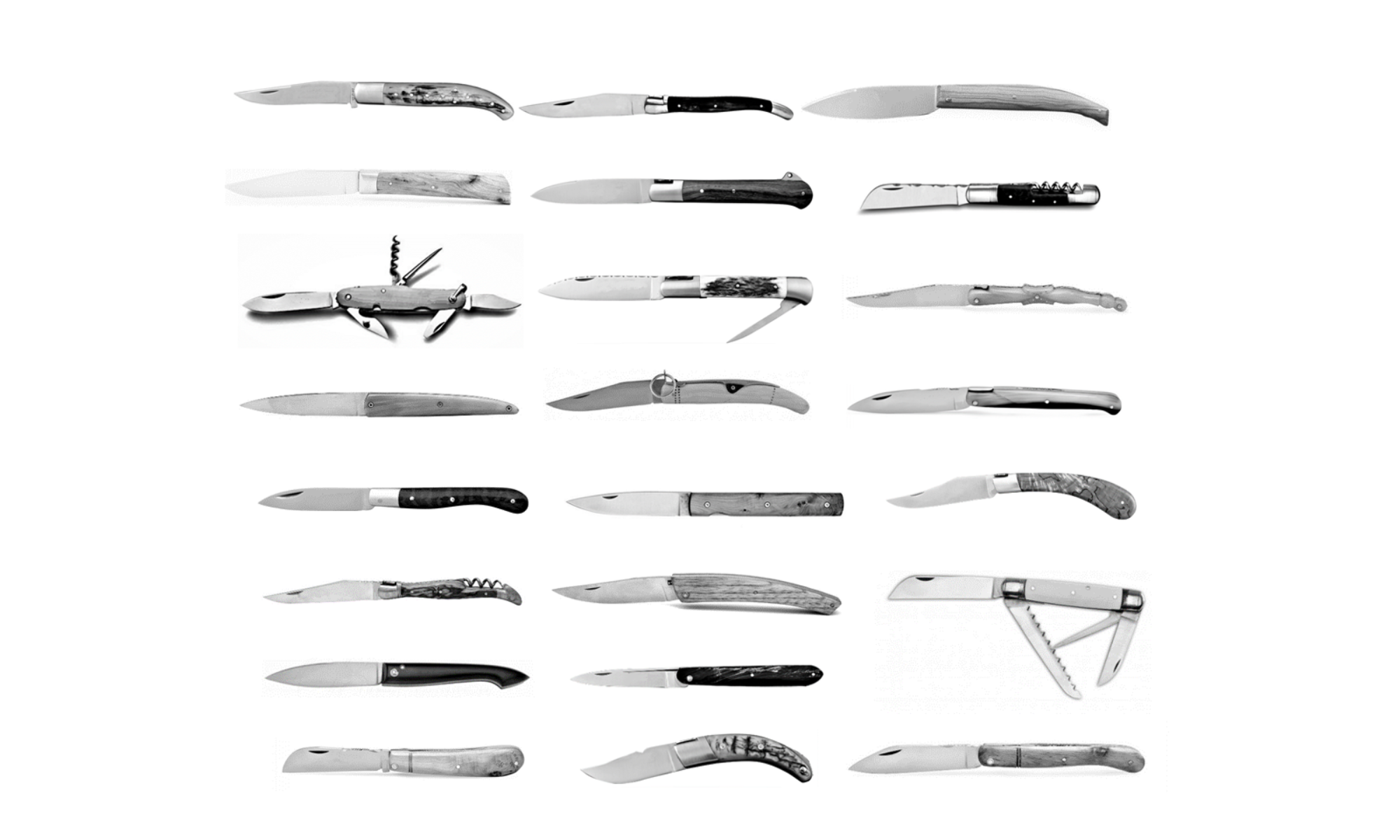
Knife anatomy
Even if some makers are still making straight laguioles, the norm is now more for the modern form with the yatagan blade, as invented by Pierre-Jean Calmels.

Of course, stainless blades are now also the norm. They tend to all have a kick on the tang, that rests on the backspring when the knife is folded, letting the edge away from the spring. Original laguioles had the tip of the blade resting on the spring. This is still true on some modern Alpin or Barrel knives for example. When it often leaves a part of the blade not so sharp (blade rap), due to the contact with the spring, it makes it more convenient in the long run. Back in the days, when the knives were used everyday to eat, to do all kind of work, the blade was sharpened over and over and over until sometimes being half the original width.

With a kick, and after heavy sharpening, the tip can overhang form the handle (proud tip), making it dangerous. No risk of that with the tip resting on the spring. That lack of kick is the reason why you should not snap close those knives but slowly follow the operation until the tip rests on the spring.


Nowadays the bee at the end of the spring is the norm but some other styles can be found, like flowers, musical instruments or other symbols.

The bee can be welded or forged. Forged is the historical way of doing it, the end of the spring is hammered then shaped with a file. The welded bee is a simpler (and therefore cheaper) way of doing it. A bee, often stamped, is welded at the end of the spring. Same goes with the filework of the backspring, it is hand made for the higher end knives, it is stamped for the cheaper ones.

Around 1880 appeared an awl on Laguiole knives. This was a request from shepherds. It is used to treat bloat on livestock, after eating hay all winter, sheep, cows etc. were feasting on fresh green grass, but this can create an accumulation of gas in the stomach and be dangerous for the animal, the awl was used to punch a small hole and bleed that gas, reason why that awl is rather thin.


A corkscrew was added a bit later, asked by those leaving their Aubrac region to go work in cafes in Paris.

The knives can have top or bottom bolsters, either in steel or brass, or be full handles, originally in cattle horn, ivory arrived later on more luxurious models and they can now be found in various types of wood.
Myths and legends
The brand:
Laguiole is not a brand, rather a style like can be an alpin, Yssingeaux or even a balisong or a stockman.
A Laguiole brand was registered in the nineties, selling all kind of products, mainly of Asian origin, but after a long battle from the city and manufacturers, it became again a common name. The fact that it is not registered also explains the countless cheap versions from Asia. Basically, anybody can make a laguiole. Of course, if you are looking for French authenticity and heritage, get one made in Laguiole or Thiers.
The bee:

There is often a confusion between the bee and the fly, it is basically a translation mistake. The “mouche” is the end of the spring, towards the blade. It can be found on various types of knives like the Issoire, Yssingeaux or Saint Martin.


The word mouche translates by fly, the insect. But it’s originally the last name of the cutler who invented the system. The same kind of story goes for the boats on the river Seine in Paris, the bateaux Mouches are not fly boats, Mouches being the name of the owner of the first company operating that kind of boats, the name became generic after that…
The mouche was originally not decorated, like on the Yssingeaux.

The first decoration appeared at the end of the Nineteenth century, with the request for more elegant, sophisticated knives. The first decor were flowers, the first bee appearing at the beginning of the Twentieth century, symbol of the industrious insect. The legend of the bee given by Napoleon to the city of Laguiole is, at best, inaccurate.


The shepherd’s cross:


A lot of laguiole knives have a characteristic cross, made of pins, on the handle. The legend says that the shepherds were sticking their knives on a loaf of bread, presenting the cross in front of them, to pray before their meal. That cross appeared late in the Twentieth century so, even if the symbol is nice, the legend is a little bit fabricated.


The Spanish origin:
What inspired Pierre-Jean Calmels to modify the traditional laguiole into the modern version is unknown, but the idea that navajas bring from Spain are at the origin of the modern laguiole is far fetch.


Find some laguiole knives on http://knives-of-france.com
















































































































































































